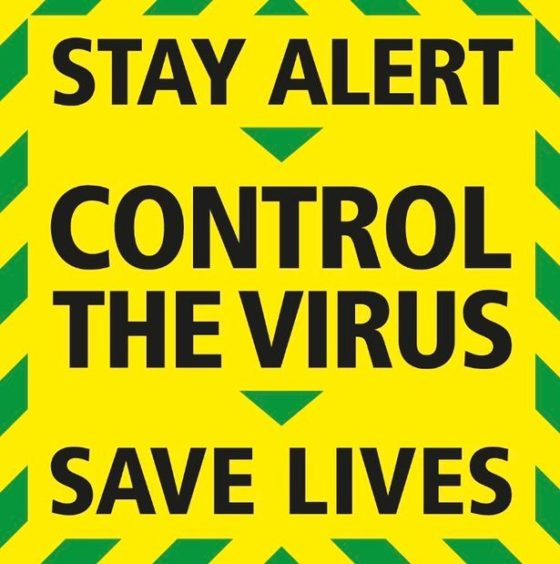A Tayside PR expert has lambasted the new message from the UK Government as “baffling” claiming the much criticised “Stay Alert” slogan lacks clarity of meaning and could cost lives.
Boris Johnson’s government released the “Stay Alert, Control The Virus, Save Lives” on Saturday night to much derision with politicians worried the lack of clear guidance would open the message up to interpretation.
Tricia Fox, managing director of PR firm Volpa, was left “perplexed” by the new message and raised issues with the changing of the colour scheme from red to green.
Ms Fox said: “I know I am not the only communications professional who is perplexed by the Government’s latest slogan if, indeed, we can even call it that, and the psychological design switch from red (stop) to green (go) on the new visuals.
“Much of the criticism centres around the clarity of meaning in the message and, to paraphrase Reginald Johnston, if we cannot say what we mean, we will never mean what we say and we should always mean what we say.
“That’s never been truer than at a time of national crisis. Communication needs to be clear and concise.
“The new slogan is definitely concise but it lacks meaning. ‘Stay Alert’ immediately conjures up additional questions: for what, when, how, where and of whom?
“‘Stay Home’, in contrast, is a clear command that instructs us where we should be.
“‘Control the Virus’ implies that we are able to control something we can’t even see, however the one thing we really can have control over is our own behaviour in limiting the spread.”
The PR expert believe the “careless” message could have serious consequences in the continued fight against coronavirus.
She said: “We have such a wealth of communication and design talent in this country, I find it baffling that this is the best that our government can do.
“It’s a careless approach to communicating and I hope they revise it quickly. Careless talk costs lives.”











